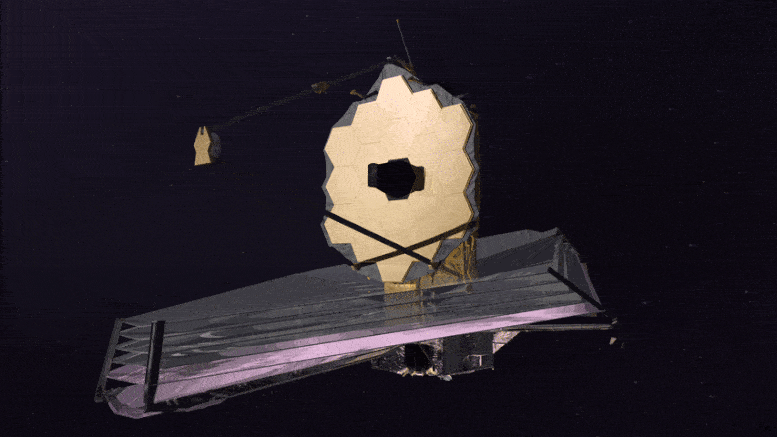The James Webb Space Telescope team is working on a communication issue between the observatory and the launch vehicle system. This will delay the launch date to no earlier than Friday, December 24. (It was scheduled to launch on December 22.) NASA will provide more information about the new launch date no later than Friday, December 17.
Webb is NASA’s largest and most powerful space science telescope ever constructed. Webb’s enormous size and frigid operating temperature present extraordinary engineering challenges. After launching from French Guiana, the observatory will travel to an orbit about one million miles away from Earth and undergo six months of commissioning in space—unfolding its mirrors, sunshield, and other smaller systems; cooling down; aligning; and calibrating. Astronomers worldwide will then be able to conduct scientific observations to broaden our understanding of the universe. Webb will also complement the science achieved by other NASA missions.
The James Webb Space Telescope is the largest, most powerful, and most technologically challenging space telescope ever built.
The Webb Telescope is so large; it must be folded like origami to fit inside its rocket fairing for the ride into space. Once in space, unfolding and readying Webb for science is a complex process that will take about six months.
Webb is designed to see the most distant galaxies in the Universe and study how galaxies evolved over cosmic time. Webb will study planets orbiting other stars looking for the chemical signatures of the building blocks of life. Webb will also study planets within our own solar system.
James Webb Space Telescope
The James Webb Space Telescope’s revolutionary technology will study every phase of cosmic history—from within our solar system to the most distant observable galaxies in the early universe. Webb’s infrared telescope will explore a wide range of science questions to help us understand the origins of the universe and our place in it.
Seeking Light from the First Galaxies in the Universe
Webb will directly observe a part of space and time never seen before. Webb will gaze into the epoch when the very first stars and galaxies formed, over 13.5 billion years ago. Ultraviolet and visible light emitted by the very first luminous objects has been stretched or “redshifted” by the universe’s continual expansion and arrives today as infrared light. Webb is designed to “see” this infrared light with unprecedented resolution and sensitivity.
Exploring Distant Worlds and the Solar System
Webb will also be a powerful tool for studying the nearby universe. Scientists will use Webb to study planets and other bodies in our solar system to determine their origin and evolution and compare them with exoplanets, planets that orbit other stars. Webb will also observe exoplanets located in their stars’ habitable zones, the regions where a planet could harbor liquid water on its surface, and can determine if and where signatures of habitability may be present. Using a technique called transmission spectroscopy, the observatory will examine starlight filtered through planetary atmospheres to learn about their chemical compositions.
Article From & Read More ( $10 Billion Webb Space Telescope Launch Delayed – Here’s What We Know - SciTechDaily )https://ift.tt/3pVYT6E
Science

No comments:
Post a Comment